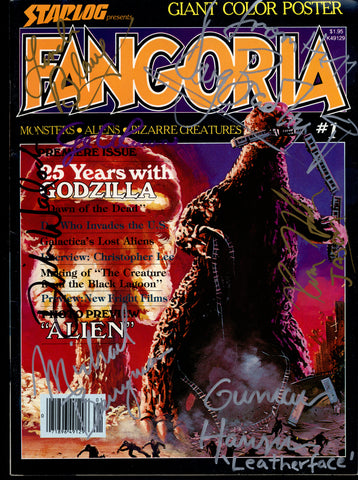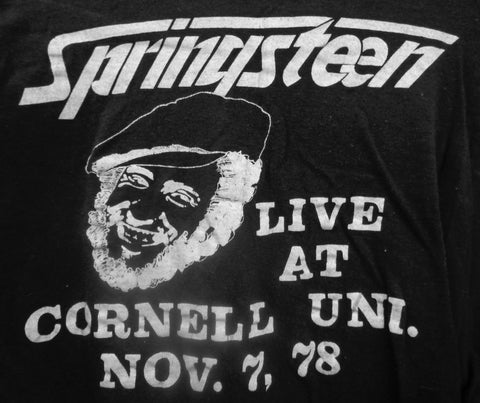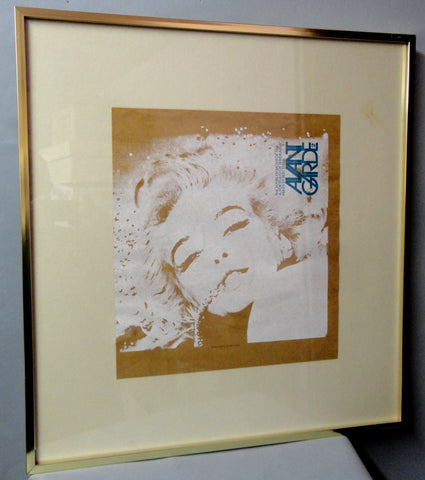Hardcover, ISBN 0877540551
Publisher: Chelsea House Publishers, 1977
Limited edition of 2000 copies. Signed & Numbered (#1349) by Burne Hogarth Includes essays by Hogarth and Maurice Horn.
TARZAN Sunday Pages from 1939 - 1942 Illustrated by BURNE HOGARTH
Note: A VERY large Book with gold Buckram slipcase 15 1/2" X 21" Tall
Almost 10 lbs!
CONDITION- Slipcase and Book are in VF Condition with very minor surface wear from being read, handled, stored & moved. Very minor superficial wear & rubbing to slipcase. Please refer to scanned images... they truly are worth a thousand words.
..........
QUALITY COMICS AMERICA has been, since 1976, a primary source for vintage books, comics, baby boomer toys, ephemera, memorabilia & collectibles. Dedicated to preserving American Pop Art & Pop Culture artifacts
Please "Follow" or Bookmark QUALITY COMICS AMERICA here on etsy because we will be adding hundreds of similar Limited and First Edition books like this one. Don't miss a one by joining us at:
https://www.facebook.com/qualitycomicsamerica
..........
Edgar Rice Burroughs
was an American writer, best known for his creations of the jungle hero Tarzan and the heroic Mars adventurer John Carter, although he produced works in many genres.
Burroughs was born on September 1, 1875, in Chicago, Illinois (he later lived for many years in the suburb of Oak Park), the fourth son of businessman and Civil War veteran Major George Tyler Burroughs (1833–1913) and his wife Mary Evaline (Zieger) Burroughs (1840–1920). His middle name is from his paternal grandmother, Mary Rice Burroughs (1802–ca. 70).
Burroughs was educated at a number of local schools, and during the Chicago influenza epidemic in 1891, he spent a half year at his brother's ranch on the Raft River in Idaho. He then attended the Phillips Academy in Andover, Massachusetts, and then the Michigan Military Academy. Graduating in 1895, and failing the entrance exam for the United States Military Academy (West Point), he ended up as an enlisted soldier with the 7th U.S. Cavalry in Fort Grant, Arizona Territory. After being diagnosed with a heart problem and thus ineligible to serve, he was discharged in 1897.
After his discharge, Burroughs worked a number of different jobs. He drifted and worked on a ranch in Idaho. Then, Burroughs found work at his father's firm in 1899. He married his childhood sweetheart Emma Hulbert (1876-1944) in January 1900. In 1904, he left his job and worked less regularly, first in Idaho, then in Chicago.
By 1911, after seven years of low wages, he was working as a pencil sharpener wholesaler and began to write fiction. By this time, Burroughs and Emma had two children, Joan (1908–72), who would later marry Tarzan film actor James Pierce, and Hulbert (1909–91). During this period, he had copious spare time and he began reading many pulp fiction magazines. In 1929 he recalled thinking that
...if people were paid for writing rot such as I read in some of those magazines, that I could write stories just as rotten. As a matter of fact, although I had never written a story, I knew absolutely that I could write stories just as entertaining and probably a whole lot more so than any I chanced to read in those magazines.
Burroughs divorced Emma in 1934, and in 1935 he married former actress Florence Gilbert Dearholt, the former wife of his friend, Ashton Dearholt. Burroughs adopting the Dearholts' two children. He and Florence divorced in 1942.
Burroughs was in his late 60s and a resident of Hawaii at the time of the Japanese attack on Pearl Harbor. Despite his age, he applied for and received permission to become a war correspondent, becoming one of the oldest U.S. war correspondents during World War II. This period of his life is mentioned in William Brinkley's bestselling novel Don't Go Near the Water.
TARZAN
is a fictional character, an archetypal feral child raised in the African jungles by the Mangani great apes; he later experiences civilization only to largely reject it and return to the wild as a heroic adventurer. Created by Edgar Rice Burroughs, Tarzan first appeared in the novel Tarzan of the Apes (magazine publication 1912, book publication 1914), and subsequently in twenty-five sequels, three authorized books by other authors, and innumerable works in other media, both authorized and unauthorized.
Burroughs created an extreme example of a noble savage figure largely unalloyed with character flaws or faults. He is described as being Caucasian, extremely athletic, tall, handsome, and tanned, with grey eyes and long black hair. Emotionally, he is courageous, intelligent, loyal, and steadfast. He is presented as behaving ethically in most situations, except when seeking vengeance under the motivation of grief, as when his ape mother Kala is killed in Tarzan of the Apes, or when he believes Jane has been murdered in Tarzan the Untamed. He is deeply in love with his wife and totally devoted to her; in numerous situations where other women express their attraction to him, Tarzan politely but firmly declines their attentions. When presented with a situation where a weaker individual or party is being preyed upon by a stronger foe, Tarzan invariably takes the side of the weaker party. In dealing with other men, Tarzan is firm and forceful. With male friends, he is reserved but deeply loyal and generous. As a host, he is likewise, generous, and gracious. As a leader, he commands devoted loyalty.
In keeping with these noble characteristics, Tarzan's philosophy embraces an extreme form of "return to nature". Although he is able to pass within society as a civilized individual, he prefers to "strip off the thin veneer of civilization", as Burroughs often puts it. His preferred dress is a knife and a loincloth of animal hide, his preferred abode is any convenient tree branch when he desires to sleep, and his favored food is raw meat, killed by himself; even better if he is able to bury it a week so that putrefaction has had a chance to tenderize it a bit.
Tarzan's primitivist philosophy was absorbed by countless fans, amongst whom was Jane Goodall, who describes the Tarzan series as having a major influence on her childhood. She states that she felt she would be a much better spouse for Tarzan than his fictional wife, Jane, and that when she first began to live among and study the chimpanzees she was fulfilling her childhood dream of living among the great apes just as Tarzan did.
Rudyard Kipling's Mowgli has been cited as a major influence on Edgar Rice Burroughs' creation of Tarzan. Mowgli was also an influence for a number of other "wild boy" characters.
BURNE HOGARTH
was born in Chicago in 1911, the son of a housewife and a carpenter. His parents were immigrants from Eastern Europe. He displayed an early talent for drawing. His father saved these efforts and, some years later, presented them and the young Hogarth to the registrar at the Art Institute of Chicago. At age 12, Hogarth was admitted, thus embarking on a long formal education that took him through such institutions as Chicago's Crane College and Northwestern University, and New York City's Columbia University in New York City -- all the while, studying arts and sciences.
Due to his father’s premature death, Hogarth began work at age 15, when he became the assistant at the Associated Editors Syndicate and illustrated a series called Famous Churches of the World. He worked for several years as an editor and advertising artist. This work provided steady (and, by 1929, crucial) employment. In 1929, he drew his first comic strip, Ivy Hemmanhaw, for the Barnet Brown Company; in 1930 he drew Odd Occupations and Strange Accidents for Ledd Features Syndicate.
As the Great Depression worsened, Hogarth relocated to New York City at the urging of friends. He found employment with King Features Syndicate in 1934, drawing Charles Driscoll’s pirate adventure Pieces of Eight (1935). In 1936 came the assignment that catapulted Hogarth’s illustration career. With Tarzan, Hogarth brought together classicism, expressionism and narrative into a new form of dynamic, sequential art: the newspaper comic strip. Hogarth drew the Tarzan "Sunday (newspaper comic strip) page" for 12 years (1937–45; 1947–50). This work has been reprinted often, most recently by NBM Publishing.
TARZAN COMIC STRIPS
Tarzan of the Apes was adapted in newspaper strip form, in early 1929, with illustrations by Hal Foster. A full page Sunday strip began March 15, 1931 by Rex Maxon. Over the years, many artists have drawn the Tarzan comic strip, notably Burne Hogarth, Russ Manning, and Mike Grell. The daily strip began to reprint old dailies after the last Russ Manning daily (#10,308, which ran on 29 July 1972). The Sunday strip also turned to reprints circa 2000. Both strips continue as reprints today in a few newspapers and in Comics Revue magazine. NBM Publishing did a high quality reprint series of the Foster and Hogarth work on Tarzan in a series of hardback and paperback reprints in the 1990s.
(wiki)
..........
More NEET STUFF can be found on etsy by visiting these teams or using the appropriate tags listed below:
COMICS-
https://www.etsy.com/teams/13611/comic-books
https://www.etsy.com/teams/14497/dc-universe
dc comics, marvel comics, justice league, batman, superman, superhero,
https://www.etsy.com/teams/14767/marvel-excelsior
comics, marvel, stan lee, excelsior, comic books,
https://www.etsy.com/teams/15638/geeks-unleashed
geek, nerd, anime, geekery, comic book,
https://www.etsy.com/teams/10185/disneyana
disney, disneyana, mickey mouse,
VINTAGE EPHEMERA:
https://www.etsy.com/teams/11978/got-vintage-shops-team
vintage, antiques, ephemera, gvs team, gotvintage, memorabilia, collectibles,
https://www.etsy.com/teams/15100/rare-vintage-bookspapers
70s, art, book, rare, paper, magazine, photography, graphic.poster,
https://www.etsy.com/teams/13509/vintage-magazine-madness/discuss/15327191/
mag, vmm, weekly, monthly, magazines, periodical,
https://www.etsy.com/teams/10903/vintage-addiction
mid century, promotional, vintage toys, vintage ephemera, vateam, retro,
https://www.etsy.com/teams/7374/vintage-books
vbteam, vintage books, booksellers,
POP CULTURE:
https://www.etsy.com/teams/11695/pop-culture-passion
pop culture, pcp team, pop culture team,
https://www.etsy.com/teams/12802/the-attic
steam punk, music, 1950s-80s inspired, mod, punk rock, rockabilly, psychobilly,
VINTAGE TOY COLLECTIBLES:
https://www.etsy.com/teams/21770/vintage-toys
toy, automobiles, action figures, tin toys, kitsch,
https://www.etsy.com/teams/9399/old-and-cool-stuff


